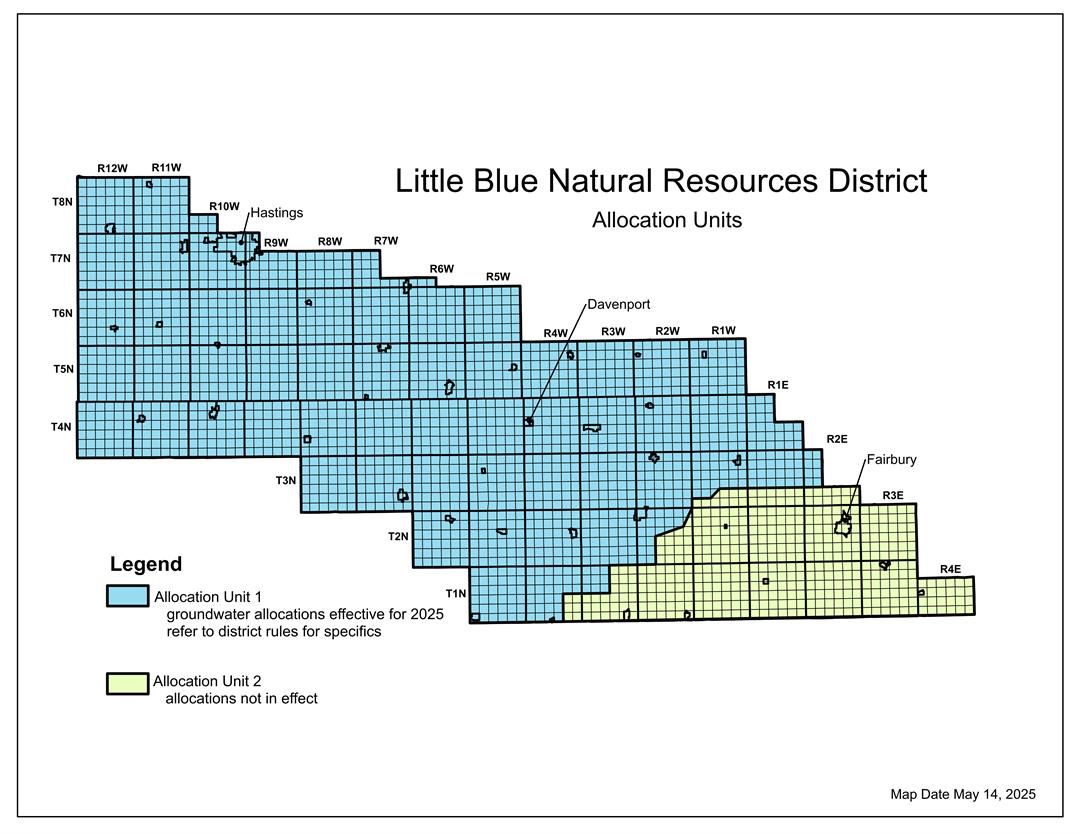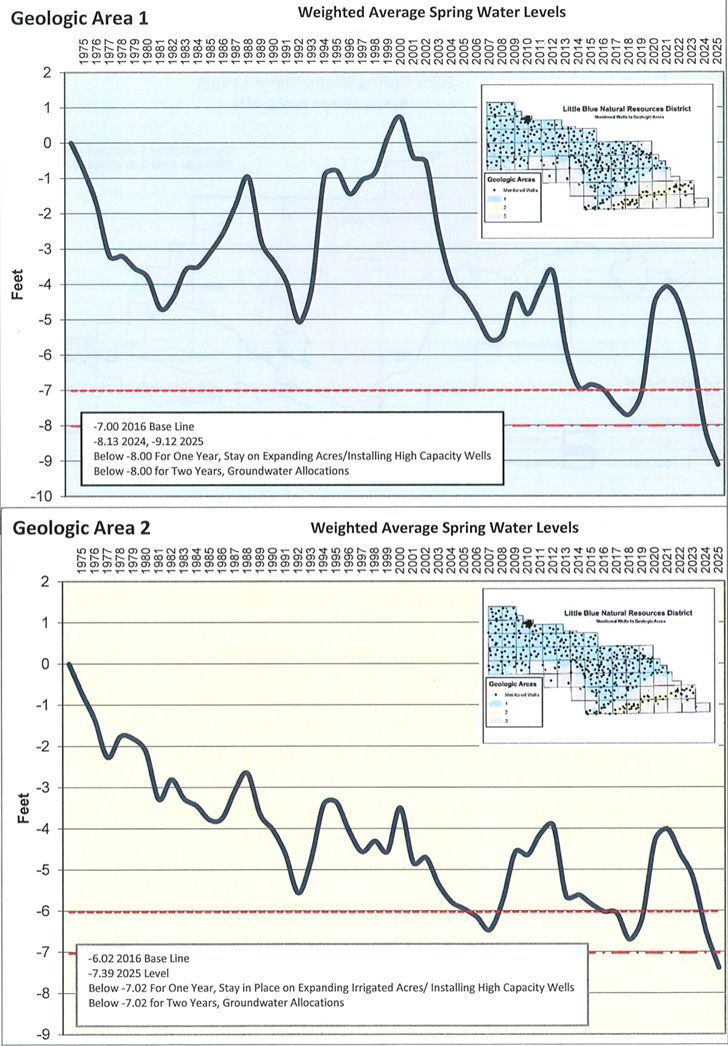Little Blue NRD implementing mandatory water allocations due to low aquifer groundwater levels
DAVENPORT, Neb. – Several factors, including recent drought conditions in Nebraska are causing falling groundwater levels across the state, and it’s also prompting a central Nebraska resources district to introduce water allocations for the first time in its history.
Due to groundwater reaching below required limits for the past two years, the Little Blue Natural Resources District (LBNRD) issued mandatory groundwater allocations in May to most of its district area that covers 38 communities and spans 1,537,280 acres.
For the next five years, high-capacity irrigation, municipal, industrial, recreational, and fish and wildlife groundwater users within the affected areas cannot use or pump more than 65 inches of groundwater from high-capacity wells, according to the LBNRD rules and regulations.
"They're able to use that amount in any way they see fit," said LBNRD Assistant Manager Tyler Goeschel. "They can use a little more on dry years, maybe a little less on wet years, but they need to stay under 65 (inches) in five years."
This comes after much of the affected area went into a mandatory 'stay' in 2024, that prohibited the construction or expansions of high-capacity water wells.
The affected region goes as far west as just west of Hastings, and southeast just to the west of Fairbury. (map below)
The non-affected region on the other side of the boundary is currently in a 'stay,' but doesn't have allocations in place now.
The allocated area now under a mandatory allocation gets their ground water from the High Plains Aquifer, or better known as the Ogallala Aquifer.
LBNRD data shows groundwater levels in Geologic Area 1 have fallen over five feet in the past four years to nearly 9 feet underground, affecting the obvious type of irrigator.
"It's definitely our farmers. They're the ones that are really watching their water use. They're required to have flow meters, and that's how we keep track of how much they're using every year," said Goeschel. "Moving forward, we'll be giving them sort of a balance of 'you've used nine inches this year, you have this much remaining on your allocation."
Goeschel says that besides farmers using higher amounts of groundwater, golf courses are another big water consumer, as well as irrigators using gravity-style irrigation for crops, which can use up to double the amount of water that traditional pivots do.
Besides agricultural groundwater users, the NRD regulations say all municipalities located in the allocation must submit a water conservation plan by May of 2026.
"Essentially, we just want them to have a plan in place for when water might be limited if we're in a drought," said Goeschel. "Watering your lawn every other day, things like that, just to show they have a plan in place, and that they're aware that water is maybe limited."
Irrigators now have to strategically plan out their water usage over the next five years, as there is a doubled overage fine or penalty if they go over the 65 inch mark.
Officials will revisit groundwater levels near the end of the five-year allocation to decide whether to lift it, or extend it.
The Little Blue NRD is offering tips, assistance, and resources to anyone who needs help conserving water, and encourages people to contact their office with any questions.



